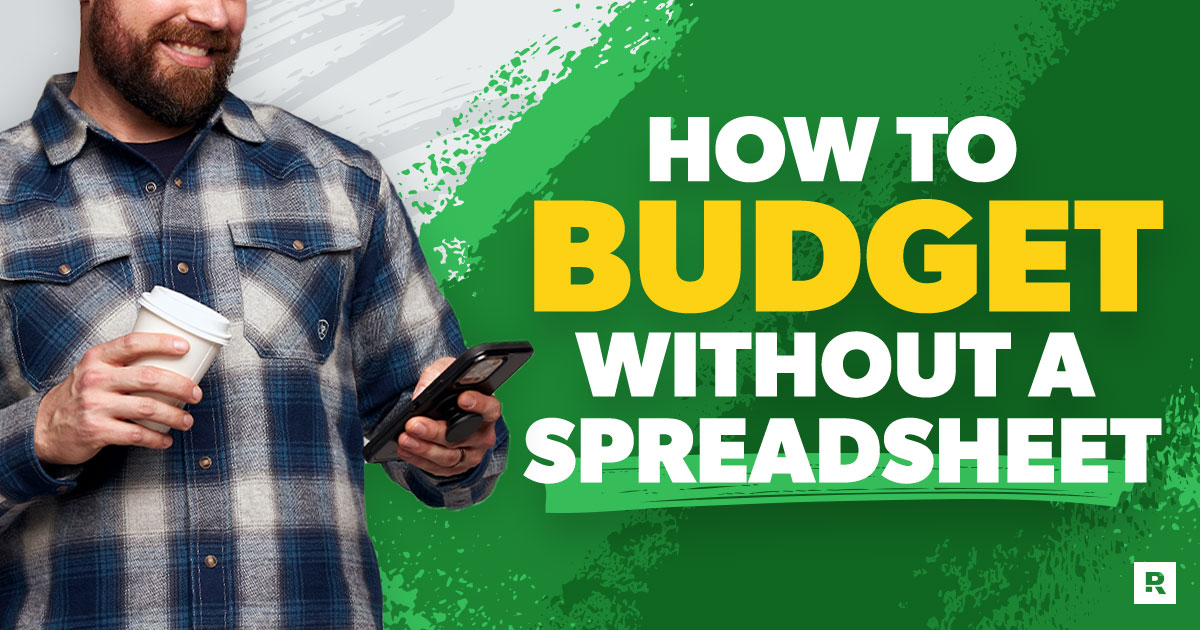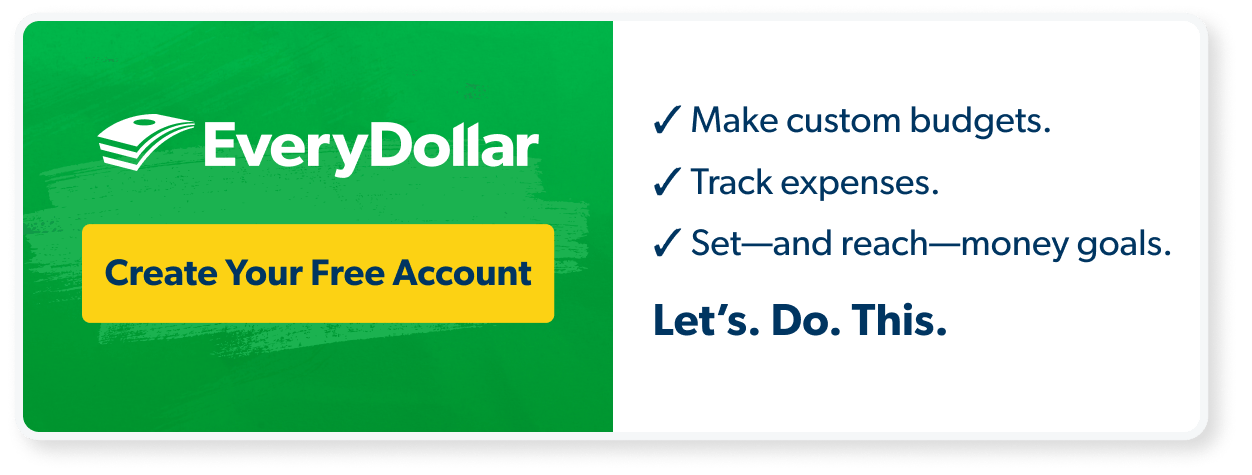Easy Budgeting Without a Spreadsheet
5 Min Read | Aug 24, 2023

Budget.
Maybe just looking at that little six-letter word makes your stomach churn. One glance and you have visions of oversized calculators, complicated spreadsheets and confusing formulas that make your head spin.
But what if you could budget without all that hassle?
Good news: You can enjoy easy budgeting. In fact, even if you’ve never made a budget in your life, you (that’s right—you!) can create a plan for your money using these simple steps.
Find an Easy Budgeting Tool
Before you make a budget, things will go way smoother if you start out using an easy budgeting tool. We just so happen to have a free one called EveryDollar. You can download the app to your phone so your budget goes where you go. (Because that’s exactly where a budget should go. With you. Everywhere.)
If you're a little old school and want to write things out with a paper and pencil first, you can use our Quick-Start Budget to record your income and expenses. Remember to have printouts of your bank statements nearby (or open up your online account) so you can easily see your numbers.
But don’t stay on paper. Trust us, moving those numbers into EveryDollar and keeping up with your monthly budget inside the app is one of our top tips for taking your financial goals from someday to today.
Follow 5 Easy Budgeting Steps
Once you’ve got your EveryDollar account set up and your bank information, you’re ready to dive in.
All you need to do is follow these five simple steps. Make sure you follow them in order—no skipping ahead!
1. List your income.
Plug in your monthly take-home pay at the top of your EveryDollar budget. This includes all the money you plan to receive for the month: paychecks, side jobs, tips—everything. If you aren’t sure what your monthly income is, look over your bank statements from the last few months to see.
Pro tip: If you work on commission or have an irregular income, estimate low and adjust your numbers once you get paid! That way you don’t overspend because you overestimated how much you’d make.
2. List your expenses.
Now that you’ve got your income listed, it’s time to list out your monthly expenses. Plug in all the places you spend money—starting with the essentials.
First up is giving and saving—then the Four Walls (food, utilities, housing, transportation). Then pop in other necessities like insurance and childcare. After that, start planning for the fun stuff, like restaurants, date nights and entertainment.
Pro tip: Don't forget seasonal expenses! You know, the things you have to pay for one month but not the next. Those month-specific expenses won't creep up on you if you plan ahead.
3. Subtract your expenses from your income. (This should equal zero.)
This is called zero-based budgeting, and it means you give all your money a job to do! So, if you make $4,000 a month, everything you give, save or spend should add up to $4,000.
But what if your zero-based budget doesn't actually come out to zero? No stress—just make some changes.
If you end up with a negative number (aka your expenses are more than your income) you need to increase your income or cut some spending.
And if you end up with a positive number? First, congrats! Doesn’t that feel good? Now put that money to work by saving it, paying off debt, or building wealth by following the 7 Baby Steps.
This is how you stay in control of your money. Every. Single. Dollar.
4. Track your spending.
You’re almost done! You've finished the first three steps to make a budget. Now it's time to keep up with it. That starts with tracking your expenses.
Start budgeting with EveryDollar today!
Every time you spend money, track it in your budget. If you swing by the grocery store, add that expense to your budget. When you fill up the gas tank, add that expense to your budget. When you buy cookies from the cute troop outside the hardware store . . . you get the idea. Even those mint chocolate wonders need to be accounted for in the budget!
As you add transactions, your EveryDollar budget will update to show you how much you’ve spent in each category—and how much you have left to spend.
Pro tip: Upgrade to the premium version of EveryDollar so your transactions can stream in automatically from your bank. Goodbye, paper receipts! So long, forgetting to track an expense. You can just drag and drop your transactions to the right budget line. That's super easy budgeting.
5. Make a new budget before the month begins.
You've got to make a new budget. Every. Single. Month. Because most of your expenses will be similar, but no two months are exactly the same. And do it before the next month begins so you're ready for what's coming!
Congratulations—you just created a budget! And the best part is that you didn’t need a calculator or any complicated formulas. You didn’t even have to open a spreadsheet.
Now it's time for your final task. Don't worry—it's really easy. All you have to do is get into the habit of actually using the EveryDollar app and creating a monthly budget. That’s right. You have to budget on the regular. Make it part of your routine—like brushing your teeth or taking showers. Yes, it's that important!
Hey, budgeter—you can do this! Download EveryDollar today and work through these five easy steps for budgeting.



